Common Stock: Lojas Americanas ( LAME3)
Current Market Price: R$ 19.71
Market Capitalization: R$ 33.9 billion
*All values in this article are expressed in Brazilian Reais (BRL) unless otherwise noted.
**The bulk of this analysis is based on the company’s most recent audited financial report, which can be found by following this link.
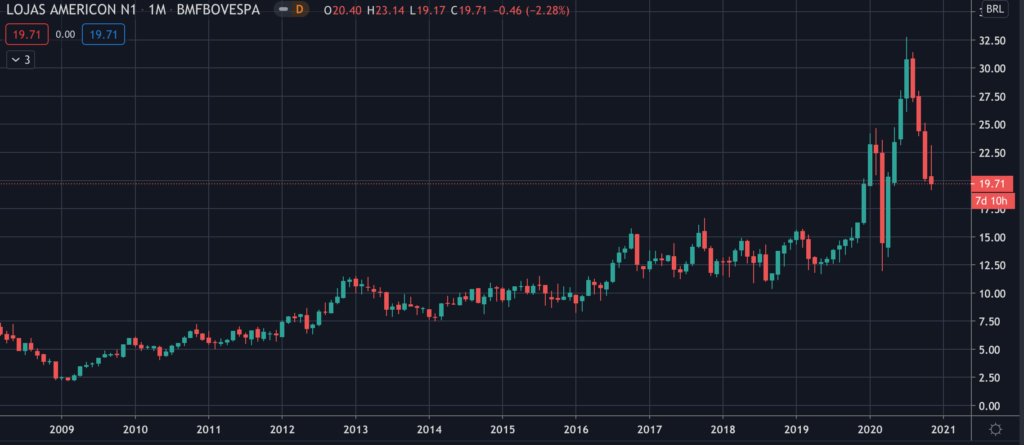
Lojas Americanas Stock – Summary of the Company
Lojas Americanas is a Brazilian retail chain. They have a total of 1,700 store, located in over 700 cities in Brazil, over 800 of which were opened in the last 5 years. They also have 7 distribution centers throughout the country. The company offers a wide range of products from over 2,000 suppliers, including 15 of their own brands which offer over 7,000 products. The company is also the controlling shareholder of B2W Digital, one of the leading e-commerce platforms in Brazil. They have over 38 million active clients and 37,000 employees. Lojas Americanas was founded in 1929 and is headquartered in Rio de Janeiro, Brazil.
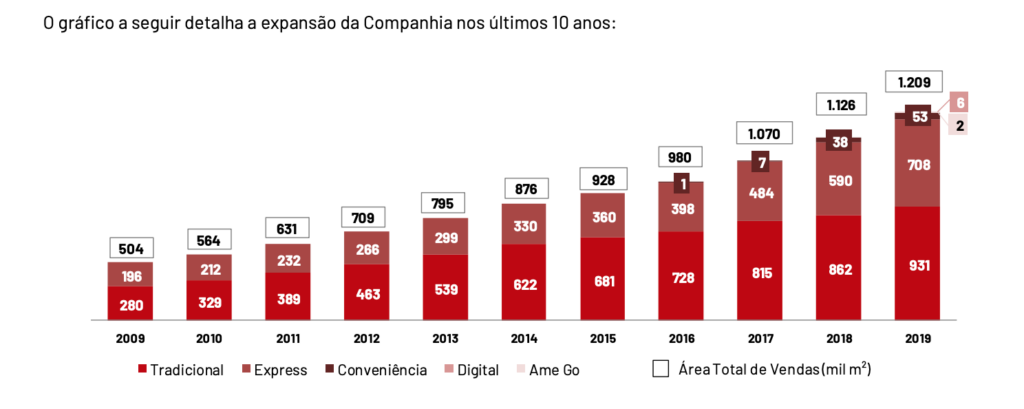
Revenue and Cost Analysis
Lojas Americanas had revenue of R$ 19 billion in 2019, an increase from R$ 17.7 billion in 2018. Their COGS in 2019 was R$ 12 billion, representing a gross margin of 36%, an increase compared to 34% in 2018. The company was profitable in each of the last three years. Lojas Americanas had net income of R$ 581.2 million in 2019, representing a profit margin of 3%, an improvement compared to 1.3% in 2018.
Balance Sheet Analysis
Lojas Americanas has a decent, but leveraged balance sheet. They have a solid base of assets and sufficient liquidity, however their liability levels, including debt, are high.
It Is worth noting that the company has a relevant derivatives book comprised of currency swaps it uses to hedge its foreign currency exposure. Investors should analyze the company’s derivative exposure in detail before investing.
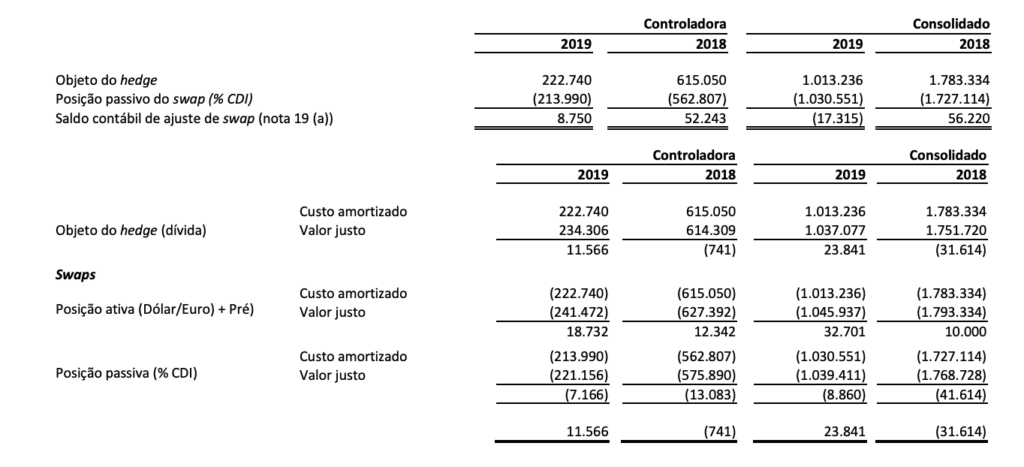
Lojas Americanas – Debt Analysis
As of year-end 2019 Lojas Americanas has R$ 17.8 billion in total debt outstanding, R$ 2.3 billion of which is classified as current. A relevant amount of this debt is denominated in foreign current, which the company hedges with the derivative instruments discussed above. However the company remains exposed to the negative effects of a depreciating Brazilian Real.
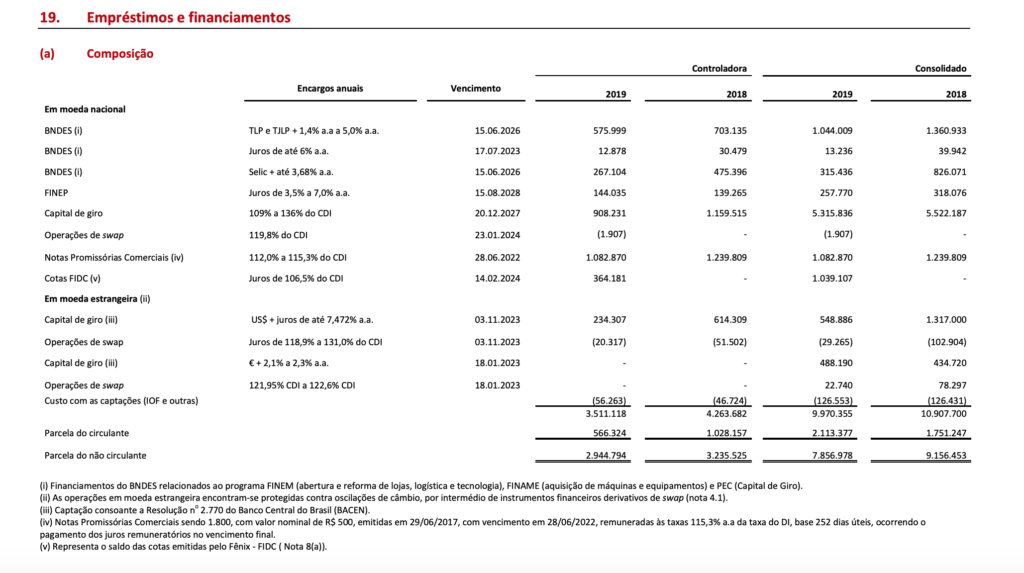
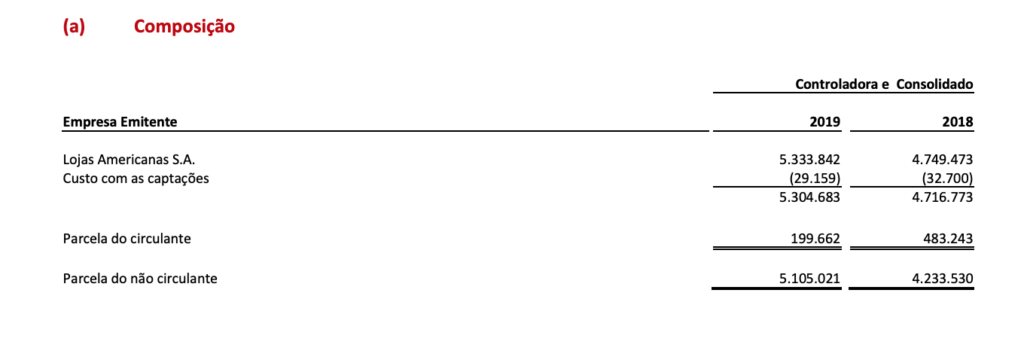
Lojas Americanas Stock – Share Dynamics and Capital Structure
As of October 2020 Lojas Americanas has 653.1 million common shares outstanding and 1.2 billion preferred shares outstanding. Total shares outstanding is around 1.9 billion shares. Insiders and institutional investors own around 45% of the company, with the remaining 55% being held by smaller shareholders with an ownership stake of less than 5%.
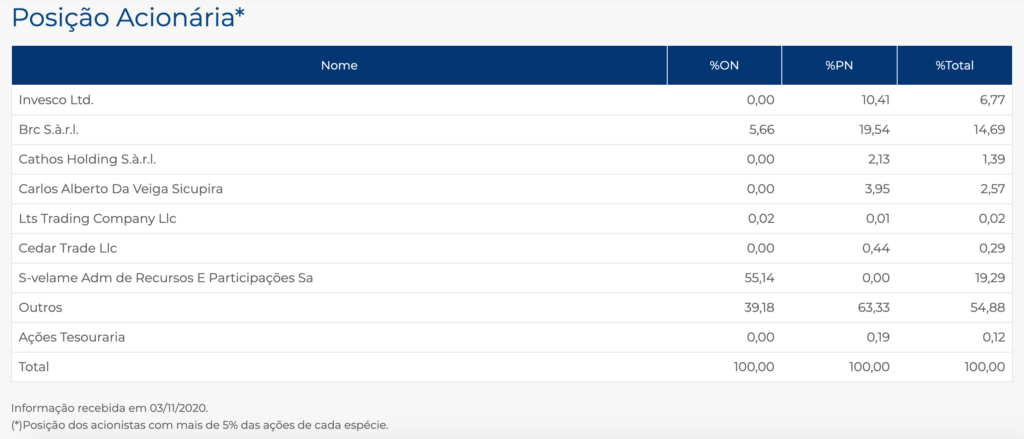
Lojas Americanas Stock – Dividends
Based on 1029’s results Lojas Americanas paid total dividends to common shareholders of R$ 0.182 cents. At the current market price this implies a dividend yield of 0.9%.
Lojas Americanas Stock – 3 Metrics to Consider
Debt to Equity Ratio
Total Liabilities/Total Share Holder Equity
R$ 25.9 billion / R$ 7.4 billion = 3.5
A debt to equity ratio of 3.5 indicates that Lojas Americanas has a leveraged balance sheet and relies heavily of debt financing to fund itself.
Working Capital Ratio
Current Assets/Current Liabilities
R$ 18.9 billion / R$ 10.5 billion = 1.8
A working capital ratio of 1.8 indicates a sufficient liquidity position. Lojas Americanas should not have problems meeting its near term obligations.
Price to Book Ratio
Current Share Price/Book Value per Share.
R$ 19.71 / R$ 3.95 = 5
Based on total shares outstanding Lojas Americanas has a book value per share of R$ 3.95. At the current market price this implies a price to book ratio of 5, meaning the company’s stock currently trades at a significant premium to the book value of the company.
Lojas Americanas Stock – Summary and Conclusions
I have shopped in Lojas Americanas stores numerous times. I had the impression that this was an older retailer that was being passed over by the times. I couldn’t have been more wrong.
Lojas Americans is one of the more aggressive retailers I have seen in Brazil. They appear to be executing on their growth and digitalization plans. The company owns one of the largest e-commerce platforms in Brazil and has nearly doubled the number of its physical stores over the past 5 years.
The company is fairly healthy financially. They have been growing revenue (obliviously given store growth), and have remained profitable, even slightly improving their margins, while pursuing their aggressive growth strategy.
I like Lojas Americanas as a business, but as an investment I don’t like its leverage and its current valuation. I will wait to see how the 2020 economic crisis impacted the company, and make an investment decision based on how their debt ratios evolved and how their e -commerce performed. I will compare Lojas Americanas stock to other Brazilian retailers such as Grupo Dimed.
Disclaimer
This is not investment advice. Nothing in this analysis should be construed as a recommendation to buy, sell, or otherwise take action related to the security discussed. If I own a position in the security discussed, I will clearly state it.
This is not intended to be a comprehensive analysis and you should not make an investment decision based solely on the information in this analysis. I hope this serves as a useful starting point for a more comprehensive analysis, and hopefully draws attention to aspects of the company that were overlooked or merit further investigation. This is by no means intended to be a complete analysis. Again, this is not investment advice, do your own research.